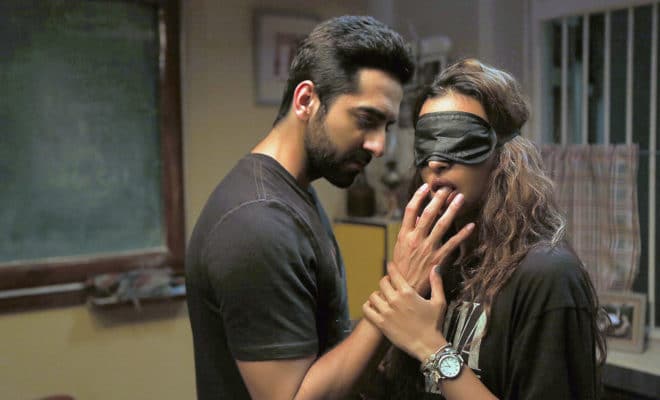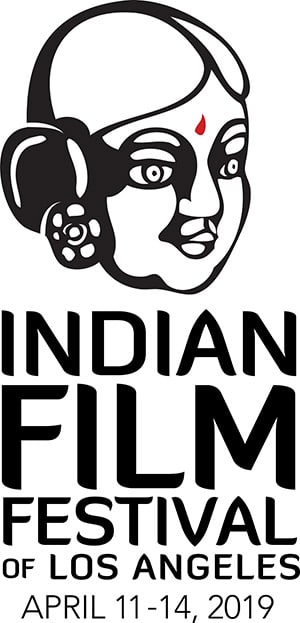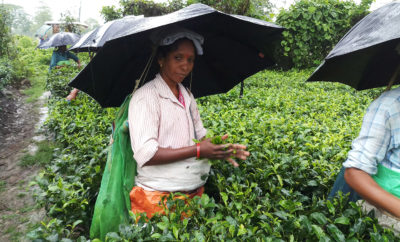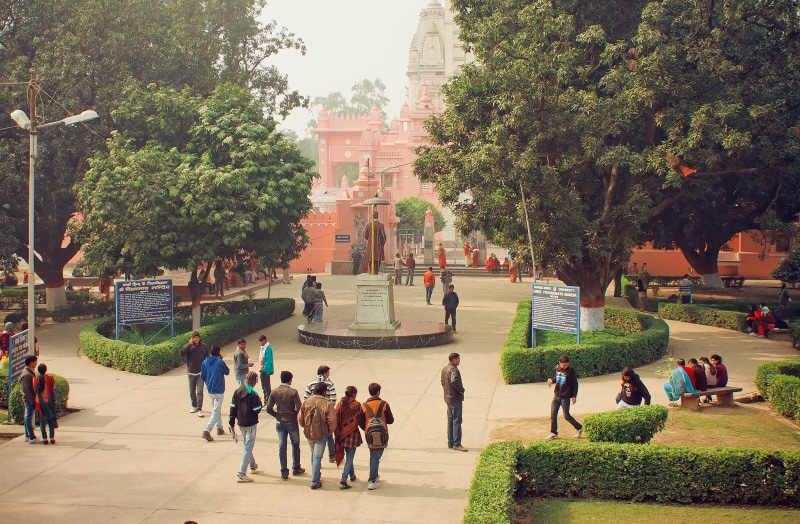Arts
IFFLA: Independence, Longevity, and Community

Still from Andhadhun, which opens the IFFLA festival.
The Indian Film Festival of Los Angeles is a crown-jewel of Indian films abroad.
The Indian Film Festival of Los Angeles, which starts on April 11, has cultivated a distinct identity for Indian cinema abroad, specifically, quality, independent films from a country that has one of the largest, most glamorous film industries in the world.
Christina Marouda, who has stewarded the festival since its birth, says: “From the very beginning, the vision was very clear: to create a platform for the type of Indian cinema that exists and it is very exciting, yet it is not easily accessible. There is such a wealth of talent, stories, languages, styles, voices, that to me, it did not make sense that there wasn’t, back in 2002, a platform to showcase and celebrate this cinema. Once you have a clear vision, then everything else becomes easy, in terms of the direction and focus.”
We know the difficulties that independent filmmakers face in an industry that marches like a freight train toward young, emerging, and independent talents. The Indian film industry is one of the largest in the world, but its populist appeal gets less respect among audiences that appreciate good films. The bright feature of Indian cinema is not just Bollywood, but its cultural, linguistic, and stylistic diversity. One has to cut through all glamour and profits to find quality films. Film festivals like IFFLA sustain such vision and provide support to good filmmakers and their viewers.
This year’s line-up of films at IFFLA, it is clear that good cinema thrives in India. Filmmakers debuting their films this year include Ronny Sen (Cat Sticks, a stunningly visual portrait of the lost youth in the dark Kolkata streets), Safdar Rahman (Chippa, an engaging layered story that weaves entertaining portraits across generations), and Anamika Haksar (Taking the Horse to Eat Jalebis, a powerful cinematic vision of Old Delhi, where migrant workers, the poor, the thieves, and tourists share vibrant space that has inherited historic depth).
 Among the directors are also well-known names: Ritesh Batra (The Lunchbox, 2013, and The Sense of an Ending, 2017) brings his Photograph to IFFLA this year. Aditya Vikram Sengupta, 2015 IFFLA winner (spellbinding and stylish Labour of Love) brings his much anticipated, richly textured Jonaki, which has won laurels at film festivals in Europe.
Among the directors are also well-known names: Ritesh Batra (The Lunchbox, 2013, and The Sense of an Ending, 2017) brings his Photograph to IFFLA this year. Aditya Vikram Sengupta, 2015 IFFLA winner (spellbinding and stylish Labour of Love) brings his much anticipated, richly textured Jonaki, which has won laurels at film festivals in Europe.
Half the soul of a film festival is in its programming, which requires the ability to navigate the availability of films and the willingness of filmmakers to send their films to the festival. Dougherty says: “Everyone knows about IFFLA, and wants to play with us. And since most festivals at the time – not to mention U.S. distributors – are largely ignoring the independent cinema from India, we have access to the best of the field, and can usually work out playing all or most of the films we want to screen here. Things have changed in five years! Not only have major international festivals begun focusing more on Indian cinema, but sales agents are stricter about which festivals get these films, and the new streaming models from Netflix and Amazon snap up some great films very quickly before we’re able to play them.
“Because of this changed environment, we need to be much quicker and get in touch much earlier to have a shot at all the great films we want. That does involve keeping an eye on films on the major festival circuit, and reaching out to filmmakers early – sometimes while they’re still in post-production – to mention our interest. I’ve also attended the Film Bazaar in Goa the past four years to maintain IFFLA’s presence within the community.”
While commercial film industry chases profits, independent filmmakers have been experimenting with film styles and pushing the boundaries of the narrative with political edge. Praveen Morchhale’s Widow of Silence confronts the issue of “half-widows” in Kashmir as men are taken away by security forces or others, leaving their wives in a suspended status in everyday lives when everything is at stake, dignity, security, and livelihood. Ritu Sarin and Tenzing Sonam, Tibetan filmmakers, showcase the traumatic lives of Tibetan refugees in Delhi and the brutally unjust state of their homeland in The Sweet Requiem. Ukraine-born Dar Gai’s film, Namdev Bhau in Search of Silence (2018) speaks for all of us as we suffer through the increasing noise-pollution in the country and yearn for spaces of silence.
On the state of “Indie” cinema in India he discovered in his curating efforts, Dougherty says: “While IFFLA 2019 will only be my sixth festival, I can say that in those years, the films have become gradually more radical, more boundary-pushing, riskier. Our filmmakers want to explore themes that speak to urgent political and social issues, and are less afraid of censorship – or at least more willing to fight that battle. We saw it with Lipstick Under My Burkha (2016) which became a hit despite it’s highly publicized censorship fight. And the same with films like An Insignificant Man (2016) or Sexy Durga (2017).
The festival opens with a tribute to Tabu, a living emblem of integrity, talent, and versatility of Indian cinema today. Her film, Andhadhun (Dir. Sriram Raghavan) launches the festival, concluding with Megha Ramaswamy’s The Odds.
Anand Patwardhan will be at IFFLA with his new film, Reason, an urgent examination of India today, a country caught in the impossible struggle between reason and faith, between democracy of ideas and people and intrusive forces of blindness and fascism.
This year, short films by established and new talents cover range of styles and issues, from humor to social and political issues bat IFFLA. Filmmakers come from south Asia as well as the city of Los Angeles.
IFFLA has kept a perceptive eye on diasporic cinema through the years. One would assume that young filmmakers face the temptations of using their films as platforms or calling cards for big-budget Hollywood films. But many of them turn out to be committed independent filmmakers, interested in film style and substance over returns at the box office.
Dougherty says: “The independent filmmaking scene in Los Angeles and the Bollywood system are two such different animals, it’s hard to think of a filmmaker who’s attempting to operate in both worlds. We definitely see Bollywood actors appearing in the work of Diaspora filmmakers – last year we had Radhika Apte in The Ashram (2018), in years prior we’ve seen Roshan Seth in the Los Angeles-based Brahmin Bulls (2013), or Shabana Azmi in a wonderful LGBTQ-themed film called Signature Move (2017), but I’m struggling to think of a filmmaker like that who’s bringing their work into Bollywood.
“I think these filmmakers want to explore themes that typically wouldn’t be addressed in a Bollywood film, or at least not with the freedom of having their own personal style. This year, our festival will feature a wonderful Los Angeles-based film called Love Goes Through Your Mind (2018, Ronak Shah), that explores the relationship between siblings, one of whom has been diagnosed as bipolar. It’s a beautiful script that deals with some tough issues, and it’s hard to see how it would fit into the Bollywood style.”
The nearly 4000 film festivals around the world, of varying size, type, and interests. Reflect how a community thinks of itself through its cinema. Film festivals are occasions to imagine a different future while contemplating the past and the present. These are the moments of reflection and strength, all the while, serving as a testimony to the importance of cinema in our lives, a way of imagining ourselves as a community.
IFFLA is currently in its 17th year and its longevity and success is a testament to the commitment and leadership of its volunteer organizers. Marouda says: “What we are able to offer though is a very rewarding experience that would accomplish a few things: a career path for those who may not have thought about doing, for example, programming curation or fund-raising for living; a platform where lifelong relationships can be established and cherished beyond IFFLA; for those on staff of Indian descent, a bridge that would connect them to India, in a meaningful way they would be proud to be part of; and for those not of Indian descent, a connection to a country, culture, and cinema that would be an eye opener and make their personal and professional life more diverse and inclusive.
“For all this to be accomplished, there needs to be a culture within the organization that attracts the type of people who fall into the above categories, and find ways to keep everyone engaged, creating an atmosphere of a family, a teamwork where everyone makes a difference, everyone has a voice, everyone brings something different to the organization. It is exhausting but also incredibly gratifying.”



